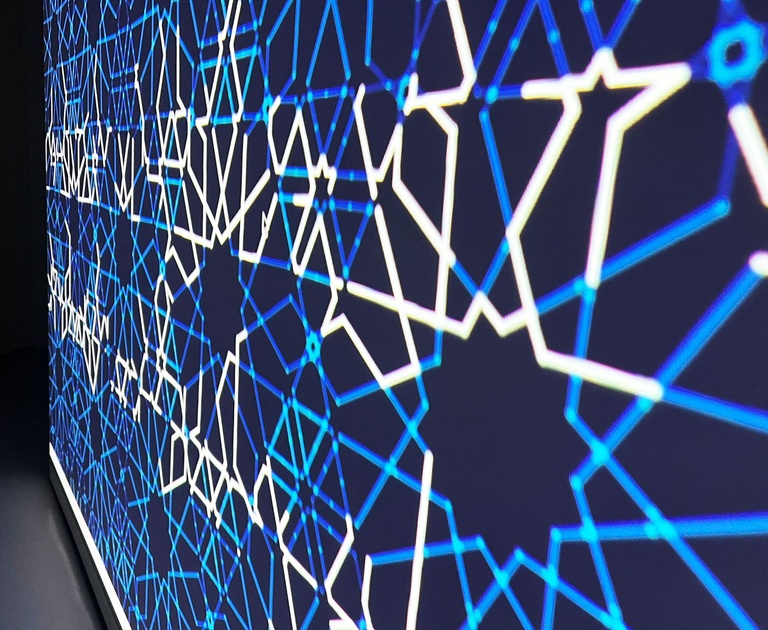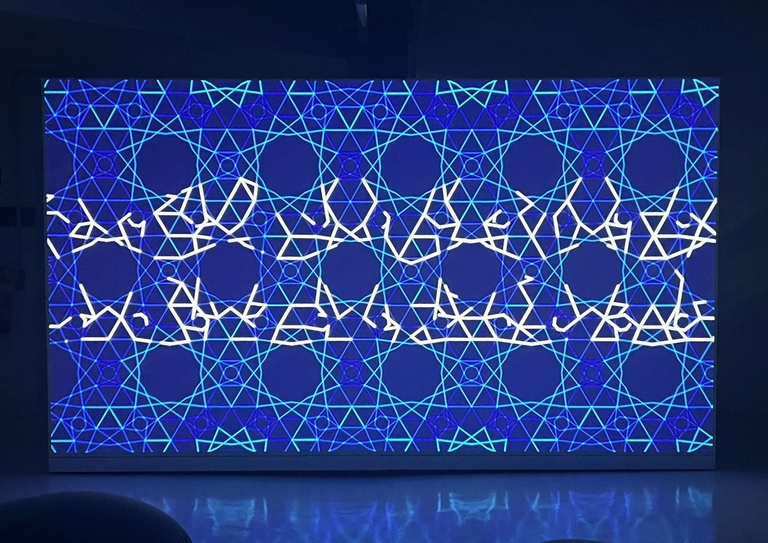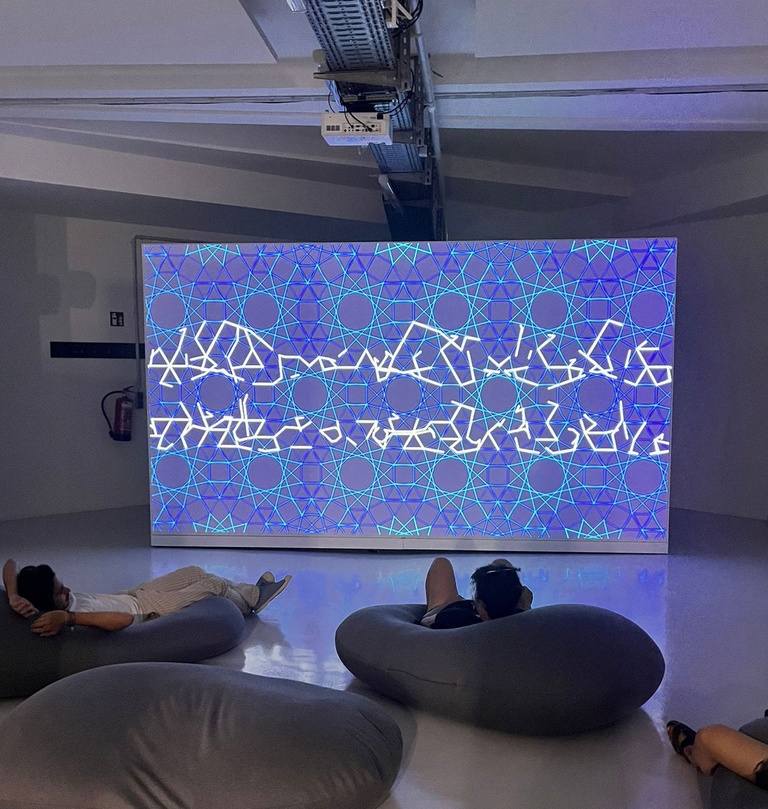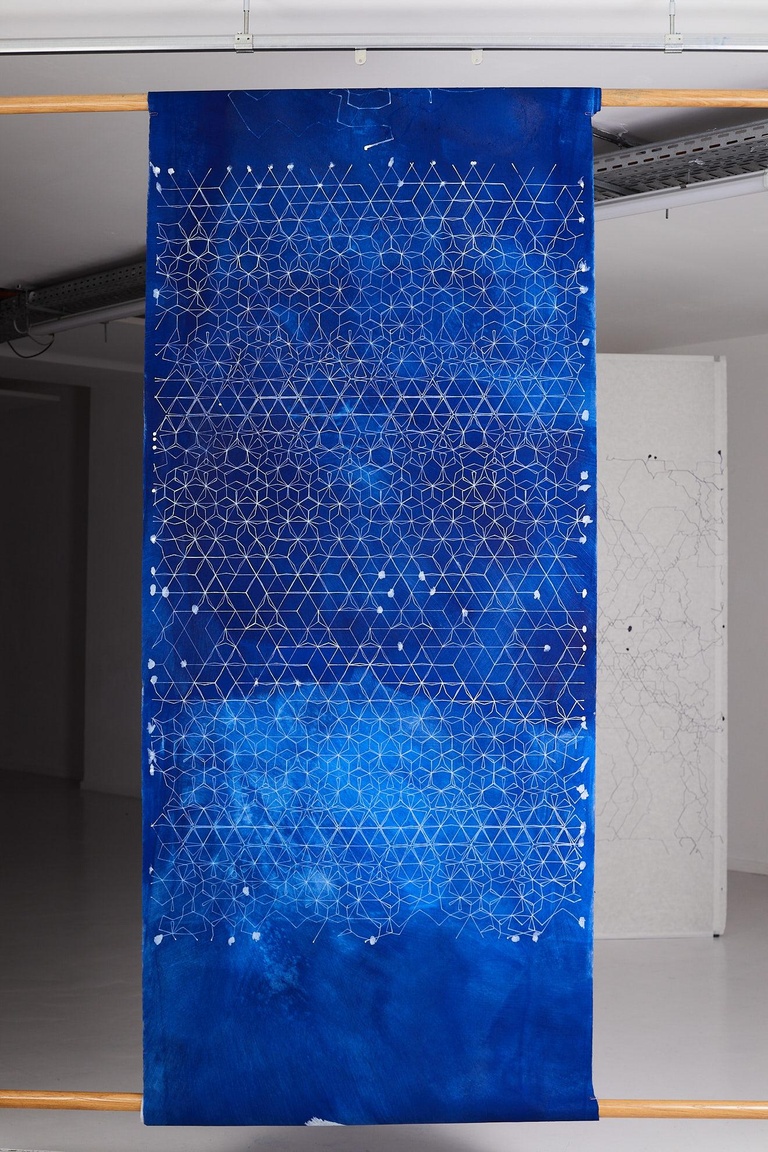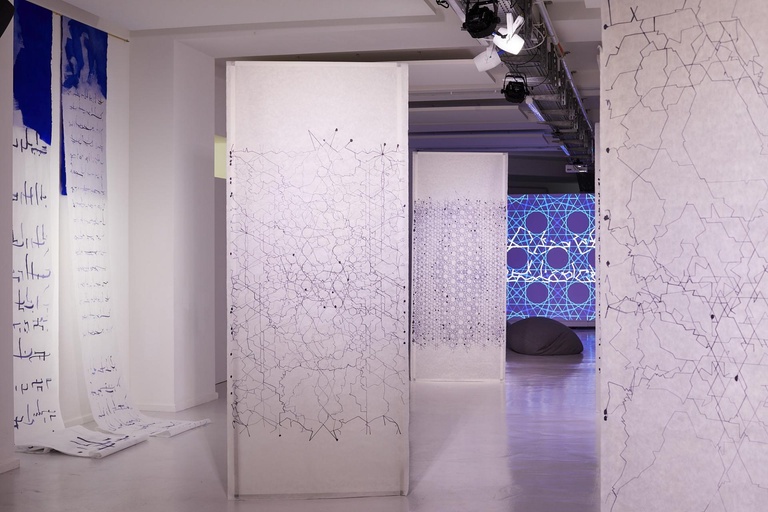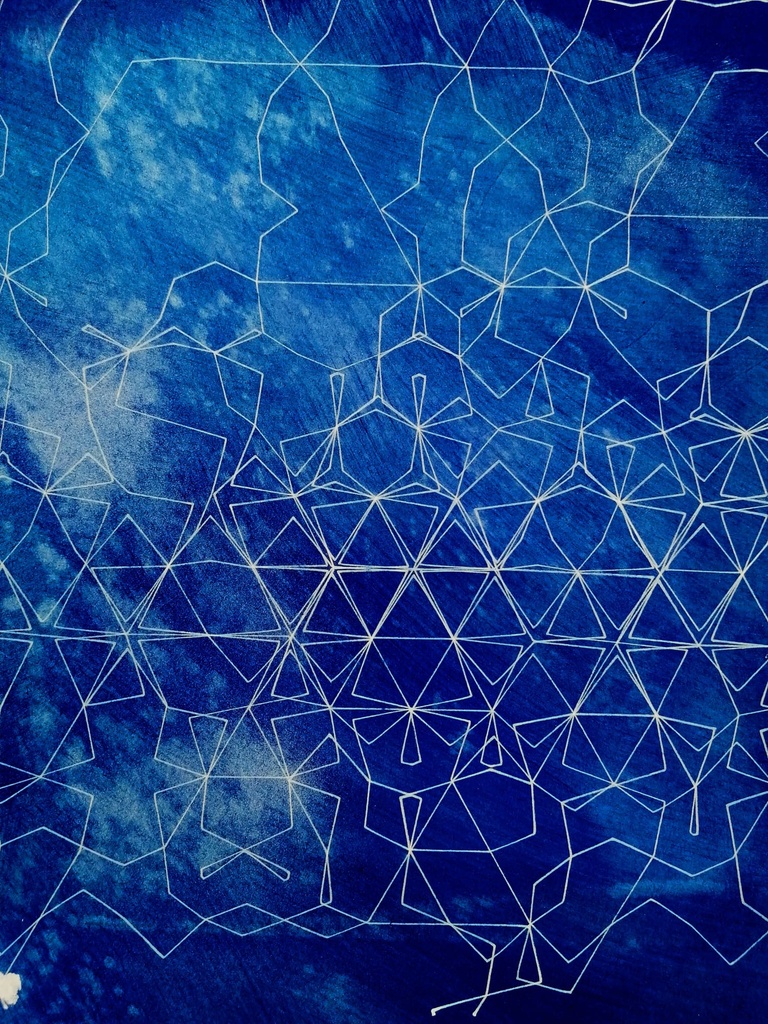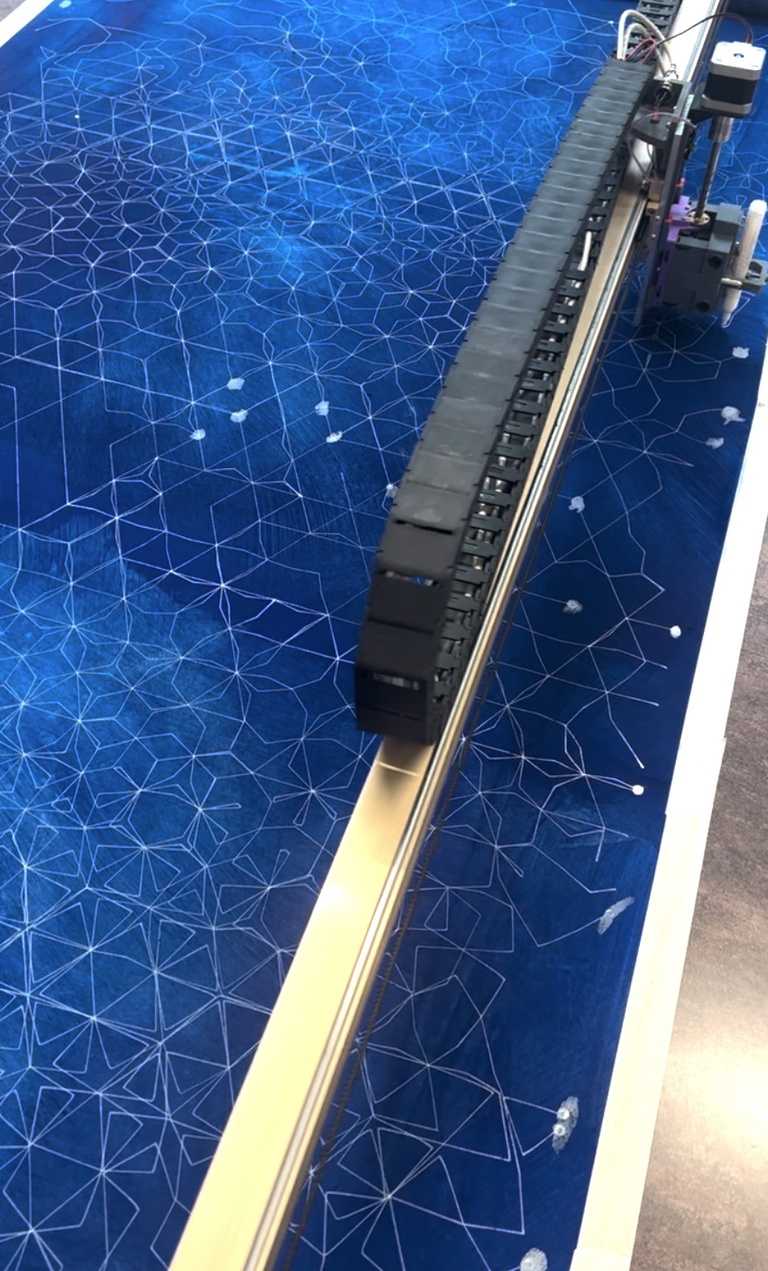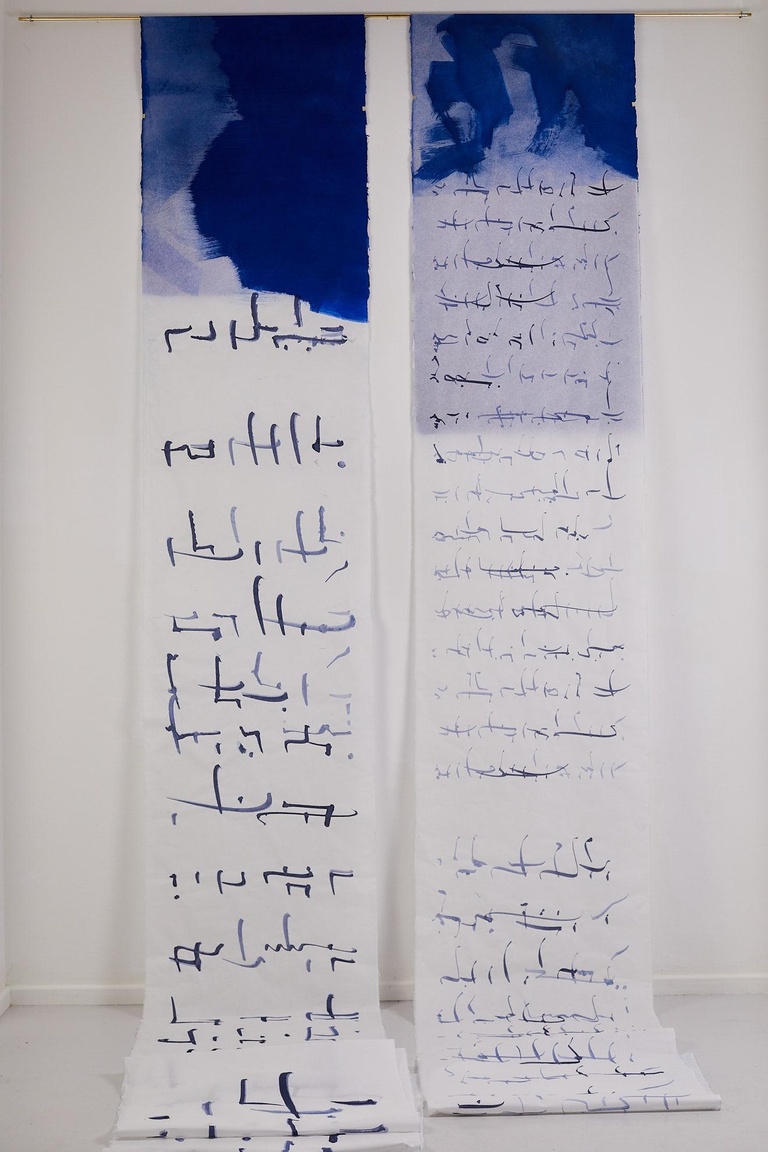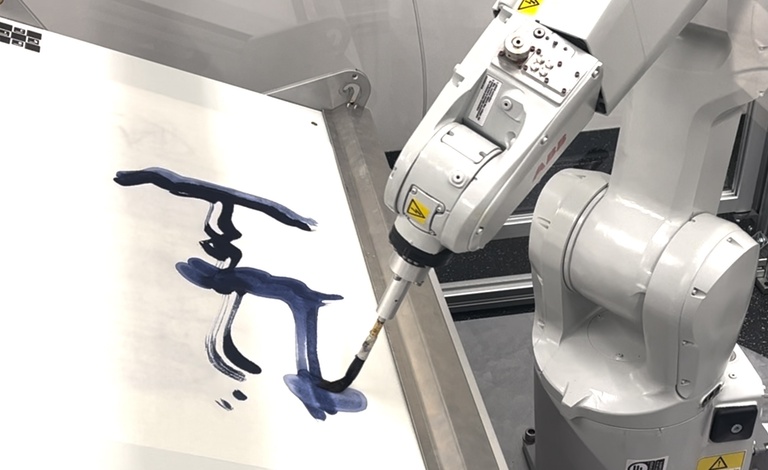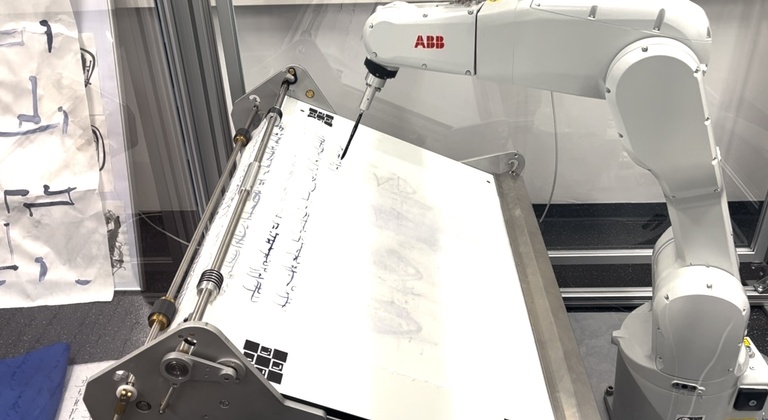Continuum
Collaboration with Liat Grayver and Nora Al-Badri
In this work I collaborated with Berlin-based artists Liat Grayver and Nora Al-Badri to visually explore their Iraqi heritage, rooted in their families' origins in Baghdad. While the conceptual foundation of the work was developed by Liat and Nora, my role focused on creating generative and robotic systems to bring their vision to life. The work was presented in Berlin as an installation featuring a series of machine generated drawings alongside a looping video displayed as a large projection. Refer to Liat Grayver's website for an in depth conceptual explanation of the work.
The robotic-painting aspects of the project were developed with the support of the e-David robotic painting lab at the University of Konstanz. The drawings were produced during an intensive work period in Konstanz, alongside Liat Grayver and guided by her expertise in both material/painterly and aesthetic aspects of the process. The procedural system behind this work relies on two procedural methods. One method developed by Mojtaba Sabetfard and Hadi Nadimi is used to generate patterns similar to "Square kufic", a highly abstracted form of Arabic script seen in ancient Islamic architecture. A second method is used to generate morphing islamic patterns according to methods developed by Craig Kaplan. The video above displays a loop that combines both methods by transforming procedural square Kufic patterns over the structure of an morphing Islamic pattern.
We also traced the same patterns on paper with a large scale plotter provided by University of Konstanz. Here we incrementally removed parts of the patterns with the goal of achieving an aesthetic similar to the one of treated the patterns as a map and iteratively removed parts of the map resulting in an aesthetic that is similar to a map.
Kufic pattern generation
Sabetfard & Nadimi developed a cellular-automata-like system that produces random patterns resembling Square Kufic. It is described in:
Sabetfard & Nadimi (2020) Generating Square Kufic Patterns Using Cellular Automata, Nexus Network Journal.
The system generates patterns such as these:
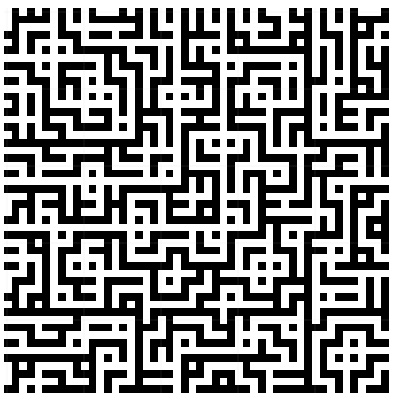
Running the system multiple times with a smaller vertical grid size and then connecting cells with path that are maximally linear, produces structures that resemble a form of writing:
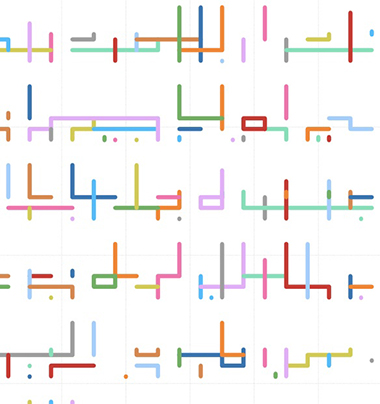
Following these paths with "calligraphic" motions produces traces that can be painted with a robot. We painted the patterns with ink on a continuous feed of rice paper.
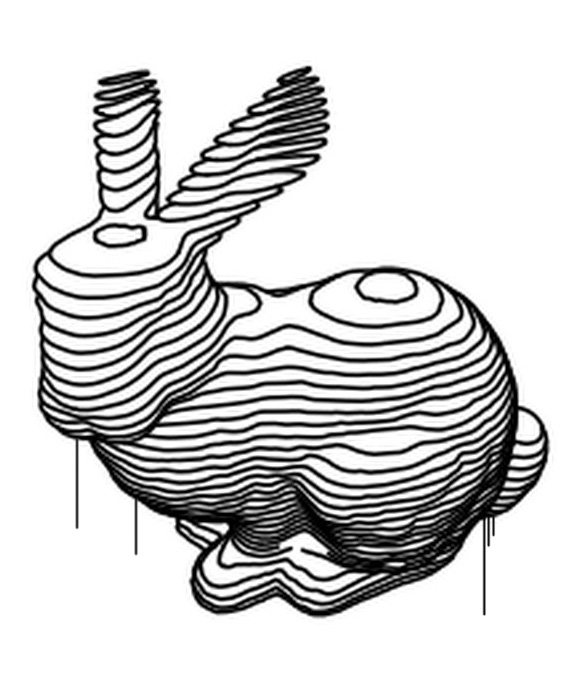 Daniel Berio
Daniel Berio